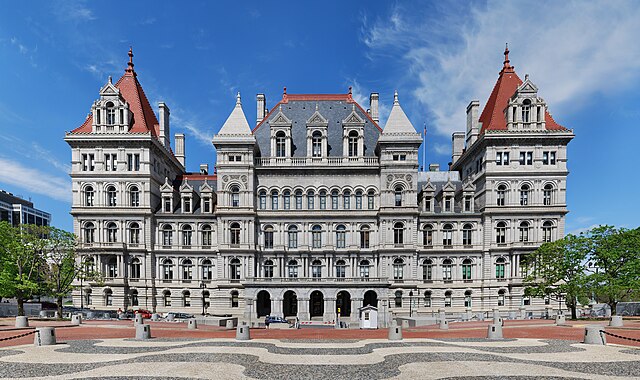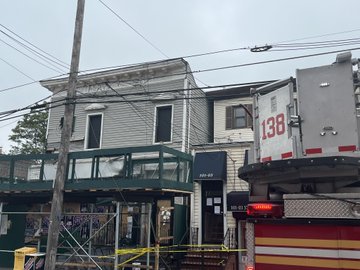By Joe Orovic
Lorraine Fittipaldi just wanted a regular evening stroll with her dog. In the process, she found herself taking a spill on Fulton St., tangled in a mess of leashes. A daredevil rat ran under her 60-pound mutt Rocky’s feet, startling the pooch and other dogs passing by. In the ensuing tangle of leashes, Fittipaldi found herself slamming down onto the pavement — while the rodent culprit skipped away unscathed.
It’s the most direct effect a rat has had on the nearly dozen Downtown residents that called Downtown Express to complain about the rodent invasion of Fulton St.
“It’s always been a problem,” said Fittipaldi of the rodents. “But since the construction started, they’ve gotten really bad.”
That construction — the replacement of a 150-year-old water main under Fulton St. — has just begun and residents said the rats have already come out in force.
“I can’t imagine what it’ll look like when they really start digging it up,” said Fittipaldi, who has lived in the area for 36 years. The prospect is gloomy, since the project will take about two and a half years, creating gaping holes in the rat-infested streets. Many residents are wondering who can be their Pied Piper.
Shoulders shrug and fingers point when residents are asked who should confront the issue. Most believe it’s the city’s problem.
“I can’t imagine it’s anyone but the city’s responsibility,” said Melissa Carol, a Southbridge Towers resident. But the city can’t act if it’s unaware of the problem. Of the 10 residents that complained to Downtown Express, only one called 311.
Both Noah Pfefferblit and Pat Moore of Community Board 1 were unaware of rat problems.
“I haven’t heard anything of it. But if it’s a problem, I think I should,” said Moore, chairperson of Community Board 1’s Quality of Life Committee.
“It’s a bit tough now, because none of the [community board] committees will be meeting again for the rest of the summer,” added Pfefferblit.
Some residents said it should be the construction contractor’s responsibility. While no one at the Lower Manhattan Construction Command Center was willing to comment, all construction contracts stipulate some form of rodent control be used by the contractors.
But the biggest source of the rats may be New Yorkers themselves. Sara Markt of the New York City Department of Health and Mental Hygiene said New Yorkers often cause their own rodent problems.
“You can’t underestimate the importance of keeping garbage cans closed,” said Markt. “But people need to work together. That’s the most effective way of handling the rats.”
In this spirit of collaboration, the Battery Park City Authority, Battery Park City Parks Conservancy and Department of Sanitation have devised a way to consolidate their garbage managements. B.P.C. North’s building staffs will carry the trash to two compactors belonging to the conservancy. The goal is to keep the trash consolidated and off the streets as much as possible.
“The only way this is going to happen, is if we do it,” said Jim Cavanaugh, the B.P.C.A.’s C.E.O.
Markt added that closing garbage limits the need to use traps and rodenticide, which residents fear would poison their dogs. Ultimately, she said, if residents do their part and keep the city informed, they’ll see the rat population thin out soon.
Above, a dead rat in Ryders Alley, a few blocks from the South Street Seaport, on Tuesday evening. Below, a rat romped through the grass in City Hall Park on Tuesday evening.


































